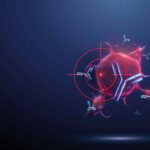What is already known
Gut microbes can influence brain and behavior in different ways. Previous research has shown that an altered microbiota composition can hasten ageing through the production of toxic metabolites. However, the mechanisms underlying this process remain mysterious.
What this research adds
Working in mice, researchers found that isoamylamine — a metabolite released from gut bacteria — directly binds to a gene in the resident macrophages of the central nervous system, thus contributing to memory loss. However, blocking isoamylamine with a short snippet of RNA known as an oligonucleotide reversed cognitive decline in the mice.
Conclusions
The findings reveal a molecular mechanism that connects gut bacteria to gene expression in the brain.
Gut microbes can influence brain and behavior in different ways. Now, researchers have found that a metabolite released from gut bacteria contributes to cognitive decline by influencing gene expression in the brain’s resident immune cells.
The findings, published in Cell Host & Microbe, reveal a molecular mechanism that connects gut bacteria to gene expression in the brain. The results may also “change the therapeutic landscape for many neurological and non-neurological conditions,” the researchers say.
Previous research has shown that an altered microbiota composition can hasten ageing through the production of toxic metabolites. However, the mechanisms underlying this process remain mysterious. Scientists have also known that during ageing, the resident macrophages of the central nervous system — called microglia — develop into a highly reactive and unbalanced state, which can lead to cognitive dysfunction and neurodegeneration.
So, a team of researchers led by Yun Teng and Huang-Ge Zhang at the University of Louisville set out to test whether microbial metabolites could influence the function of microglia.
Cognitive decline
First, the team analyzed metabolites in the guts of ageing mice and found five metabolites that appeared to induce the expression of a gene called S100A8, which helps microglia to sense changes in the brain. Of these metabolites, one called isoamylamine was able pass through the blood-brain barrier. Isoamylamine is released into the gut by Ruminococcaceae bacteria.
The researchers found that isoamylamine became increasingly common as the mice aged, and adding the metabolite to microglia cells isolated from young mice triggered programmed cell death.
Further experiments showed that isoamylamine binds S100A8 on a short sequence of DNA, called a promoter, that controls the expression of the gene. The binding of isoamylamine ‘opened up’ the promoter region, allowing a specific protein that controls how other genes are expressed to latch onto the promoter and trigger the expression of S100A8.
Compared to untreated mice, young mice that were given isoamylamine performed worse in assays that measured the animal’s behavioral and cognitive abilities, the team found.
Restoring memory
Looking for ways to block the binding between isoamylamine and S100A8, the researchers studied different types of RNA snippets, known as oligonucleotides. They identified one, S100p1-G, that could compete with isoamylamine to bind the promoter of S100A8, thus preventing the gene from being activated.
Dampening the activity of isoamylamine with S100p1-G reversed cognitive decline in the mice, the team found. The result suggests that S100p1-G has the potential to reverse isoamylamine-mediated memory loss and learning difficulties during ageing, the researchers say.
“The significance of this finding lies not only in developing personalized oligo therapy to delay aging but also holds the potential to change the therapeutic landscape for many neurological and non-neurological conditions by oligo-mediated manipulation of gut metabolite activity,” they add.











